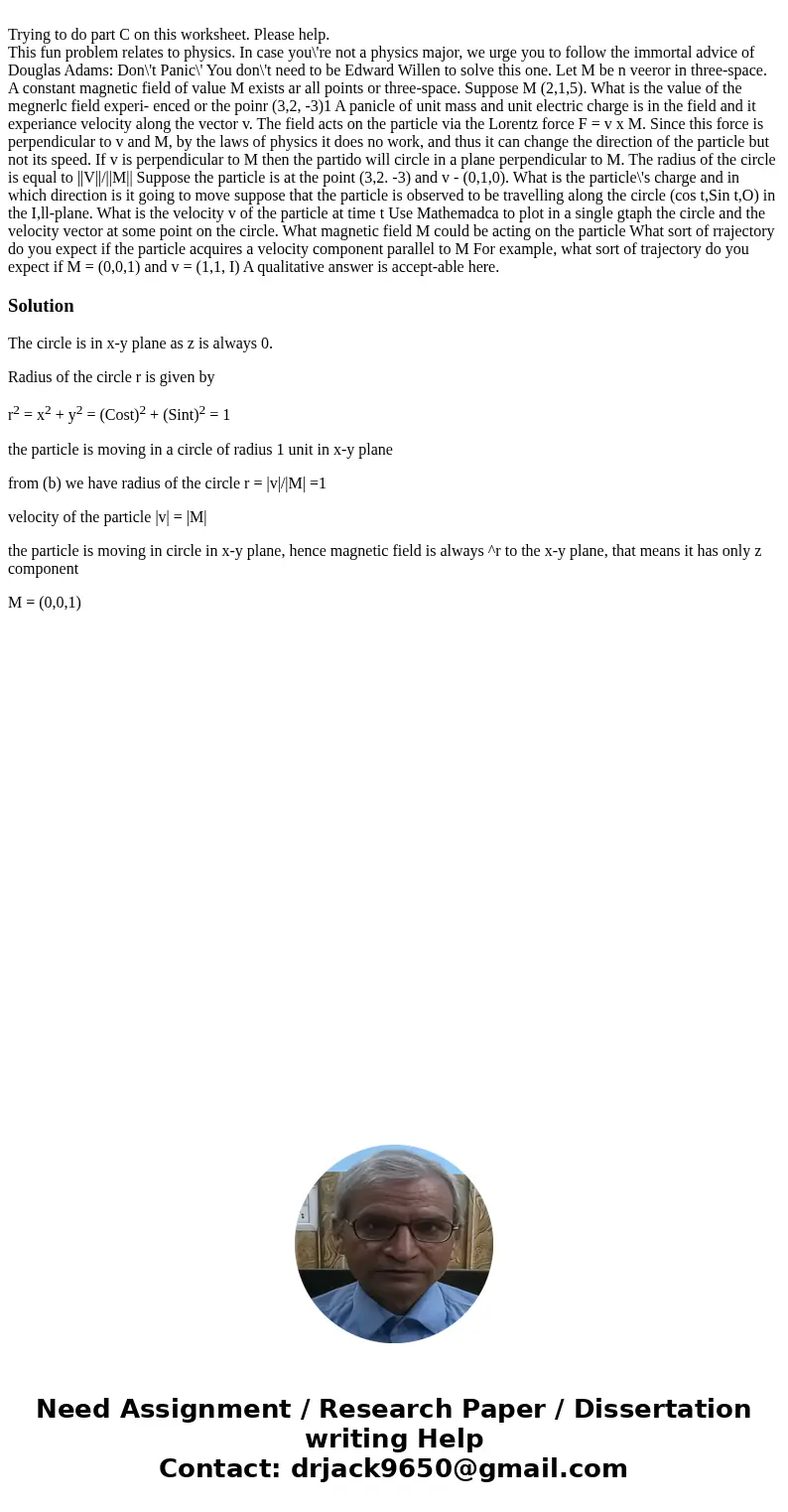Trying to do part C on this worksheet Please help This fun p
Trying to do part C on this worksheet. Please help.
This fun problem relates to physics. In case you\'re not a physics major, we urge you to follow the immortal advice of Douglas Adams: Don\'t Panic\' You don\'t need to be Edward Willen to solve this one. Let M be n veeror in three-space. A constant magnetic field of value M exists ar all points or three-space. Suppose M (2,1,5). What is the value of the megnerlc field experi- enced or the poinr (3,2, -3)1 A panicle of unit mass and unit electric charge is in the field and it experiance velocity along the vector v. The field acts on the particle via the Lorentz force F = v x M. Since this force is perpendicular to v and M, by the laws of physics it does no work, and thus it can change the direction of the particle but not its speed. If v is perpendicular to M then the partido will circle in a plane perpendicular to M. The radius of the circle is equal to ||V||/||M|| Suppose the particle is at the point (3,2. -3) and v - (0,1,0). What is the particle\'s charge and in which direction is it going to move suppose that the particle is observed to be travelling along the circle (cos t,Sin t,O) in the I,ll-plane. What is the velocity v of the particle at time t Use Mathemadca to plot in a single gtaph the circle and the velocity vector at some point on the circle. What magnetic field M could be acting on the particle What sort of rrajectory do you expect if the particle acquires a velocity component parallel to M For example, what sort of trajectory do you expect if M = (0,0,1) and v = (1,1, I) A qualitative answer is accept-able here. Solution
The circle is in x-y plane as z is always 0.
Radius of the circle r is given by
r2 = x2 + y2 = (Cost)2 + (Sint)2 = 1
the particle is moving in a circle of radius 1 unit in x-y plane
from (b) we have radius of the circle r = |v|/|M| =1
velocity of the particle |v| = |M|
the particle is moving in circle in x-y plane, hence magnetic field is always ^r to the x-y plane, that means it has only z component
M = (0,0,1)

 Homework Sourse
Homework Sourse